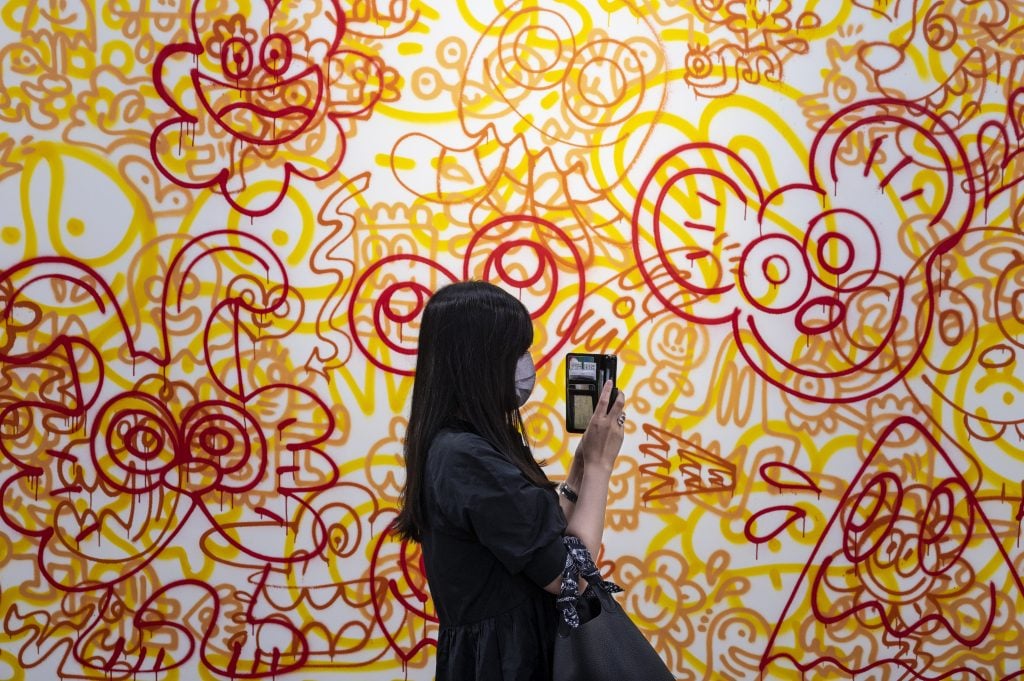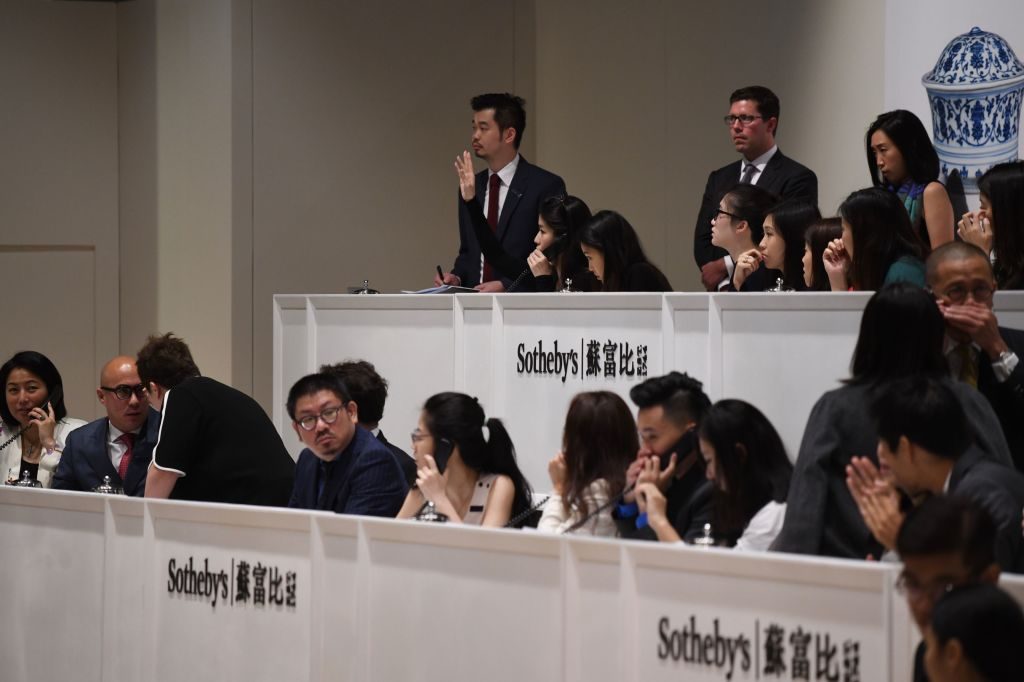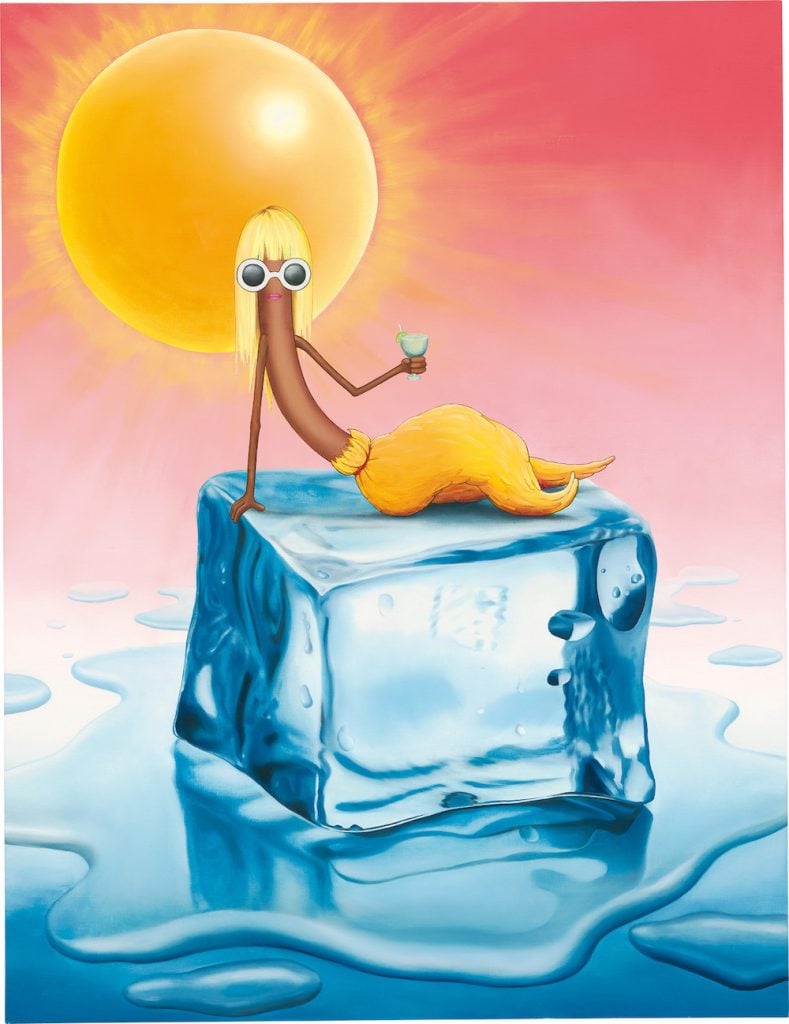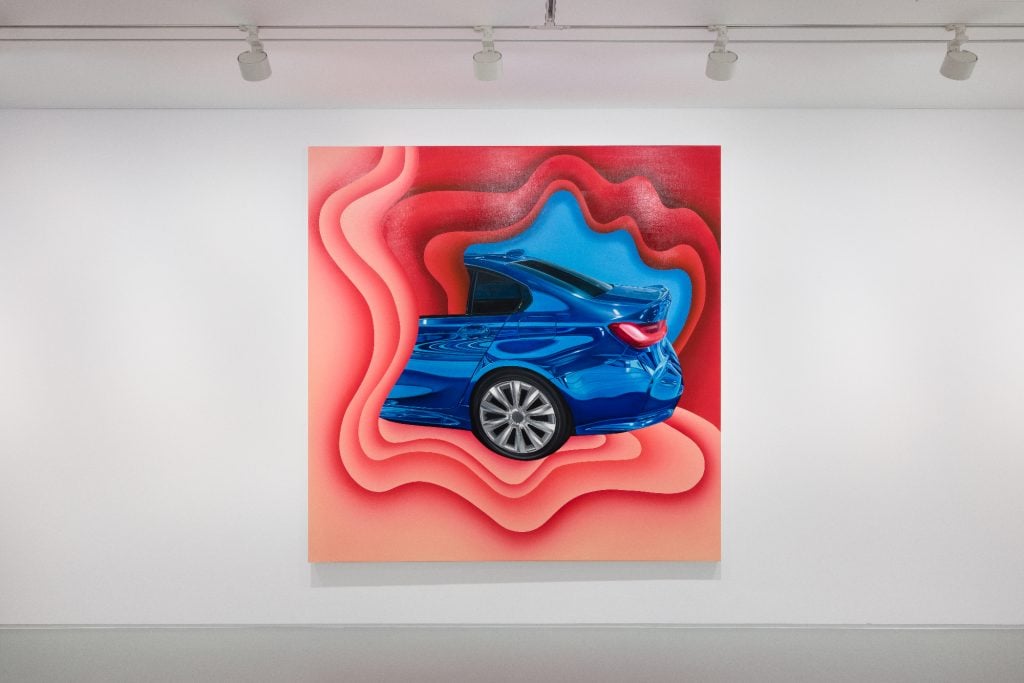The Art Detective
Asian Collectors Were on the Bleeding Edge of the Recent Art-Market Boom. Now, They’re Pumping the Brakes
The most recent contemporary-art evening sales in Hong Kong were down a combined 30 percent from a year earlier.

The most recent contemporary-art evening sales in Hong Kong were down a combined 30 percent from a year earlier.

Katya Kazakina

The Art Detective is a weekly column by Katya Kazakina for Artnet News Pro that lifts the curtain on what’s really going on in the art market.
The art world is in a funny place right now. It’s coming out of a pile-up of auctions, art fairs, and biennials so massive that it makes one almost nostalgic for the lockdown hiatus. Ahead… is a pile of questions. Are we headed into a recession? Which bubbles will burst? Who will be left standing?
Amidst the euphoria surrounding the return to live events, it was easy to miss a few dark clouds forming above Hong Kong, where the evening sales of modern and contemporary art at Christie’s, Sotheby’s and Phillips declined 30.2 percent from a year earlier, according to ArtTactic.
“It’s hard to say whether these results are signs of a cooling Hong Kong art market, or a market that is just catching its breath,” the company’s report said.
Asia has been a key engine of growth in the art market since the pandemic, ushering in a wave of new buyers and rampant speculation for popular emerging artists. The slowdown may be the bleeding edge of the current boom, with ripple effects for the broader market. Or it may be a temporary pullback driven by macroeconomic factors, such as local currency fluctuations and pandemic restrictions.
“The market is cooling down,” said Hong Kong-based collector Jacobo Garcia Gil. “The past few years, it was a little bit crazy. Many sales were white-glove right through the pandemic. The rest of the art market was contracting, but Asia was booming.” In 2020, the country briefly overtook the U.S. as the largest art market in the world.
But after two years of relative normalcy behind closed borders, everything changed in March, when the virus began to spread and the government instituted new, draconian restrictions. Collectors “were not in the mood,” one advisor noted. “They said: I am fighting for food. I am not in the mood to fight for art.”

Sotheby’s Hong Kong. AFP PHOTO / Anthony WALLACE via Getty Images)
Mainland China’s absence could be felt in the Hong Kong sales. Christie’s fared the best of the three houses. It totaled $428 million in a marathon of auctions held during the last week of May, down from $458 million in May 2021. The evening sale of 20th/21st century art was 10 percent down from a year earlier, at $231 million.
Sotheby’s series of sales across various categories in April totaled $496 million, the highest total for the location since 2013. But modern and contemporary evening sales shrunk 30 percent to $198.8 million from 2021.
Phillips fared the worst as its collaboration with the behemoth Poly Auctions didn’t pan out this time around. The evening sale of 20th century and contemporary art netted $45.5 million on June 22, down almost 50 percent from the “white-glove” extravaganza in 2021.
Another indicator of a cooling auction market in Asia is a lower ratio of price-to-estimate. Take Emily Mae Smith’s painting Broom Life, which soared to $1.7 million at Phillips Hong Kong last June, 22 times its high estimate of $76,900. (Prices include fees, estimates don’t.) This year, not a single lot surged that much above expectations. The highest ratio belonged to Louise Bonnet’s painting, The Ice Skater, which fetched $573,525 at Sotheby’s, almost 13 times the high-estimate.
Artists who’ve been super hot even a couple of seasons ago aren’t spiking anymore. Amoako Boafo’s works sold for multiples of their estimates in Hong Kong a year ago. This time around, the Ghanian didn’t make ArtTactic’s list of top 25 artists in terms of price-to-estimate ratio, which started at 2.8 times.

Emily Mae Smith, Broom Life.(2014) Image courtesy Phillips and Poly Auction.
Other wet paint artists, including Mae Smith, Jadé Fadojutimi, and Loie Hollowell didn’t make the list either. And neither did Matthew Wong.
New names are up though, including Anna Weyant, whose 2020 still life, Josephine, fetched $513,840, nine times the high estimate, at Sotheby’s Hong Kong in April. At Phillips Hong Kong, Lucy Bull’s monumental 2020 canvas titled 8:50 went for $1.4 million, or 7.6 times the high estimate and a new record for the artist. Advisors report continued demand for artists like Nicolas Party and George Condo.
“It’s really tough for emerging artists,” a prominent Hong Kong-based advisor said. “The cycle is extremely short. You get consumed and people move on. And it’s fascinating just how fast they move on.”
Korea, which is vying to become Asia’s premier art hub with the debut of Frieze Seoul, has had its own troubles. South Korean Won lost 14 percent in value against the U.S. dollar in the past year, with a 3.3 percent decrease in the past month alone.
“In terms of my clients, [the value of the] Korean Won is a really big factor,” said the Minneapolis, Minnesota-based Connor Remes, who advises younger Asian collectors.
I heard a story about a Korean collector interested in buying an artwork from an American gallery at a major international art fair recently, only to back out after checking the conversion rate. (That, an advisor pointed out, may have been a convenient excuse to avoid buyer’s remorse.)

Installation view, “Rafa Silvares: AIRBAG” at Peres Projects in Seoul. Courtesy of Peres Projects.
The Asian market is, of course, comprised of many smaller, regional markets. Just as collectors converged around the Hong Kong auctions to offer a stress test, Frieze Seoul will be another this fall.
Garcia Gil noted that collectors coming to the new fair must expect to pay 10 to 15 percent extra because of currency conversions. This may end up stifling a few transactions, but it is also a boon for local dealers who accept Korean Won.
“People are very aware of the ups and downs in economic indicators,” said art dealer Javier Peres, who recently opened a gallery in Seoul. “It’s something people normally bring up in conversations. But for us it’s never really been a factor in our day-to-day activities.”
In fact, Peres is thinking of expanding in the country’s capital just after three shows, which all sold out, he said.
“People we are working with, they expect the top-quality stuff,” Peres said. “They don’t want to play around. To the degree you bring the goods, they are with you.”